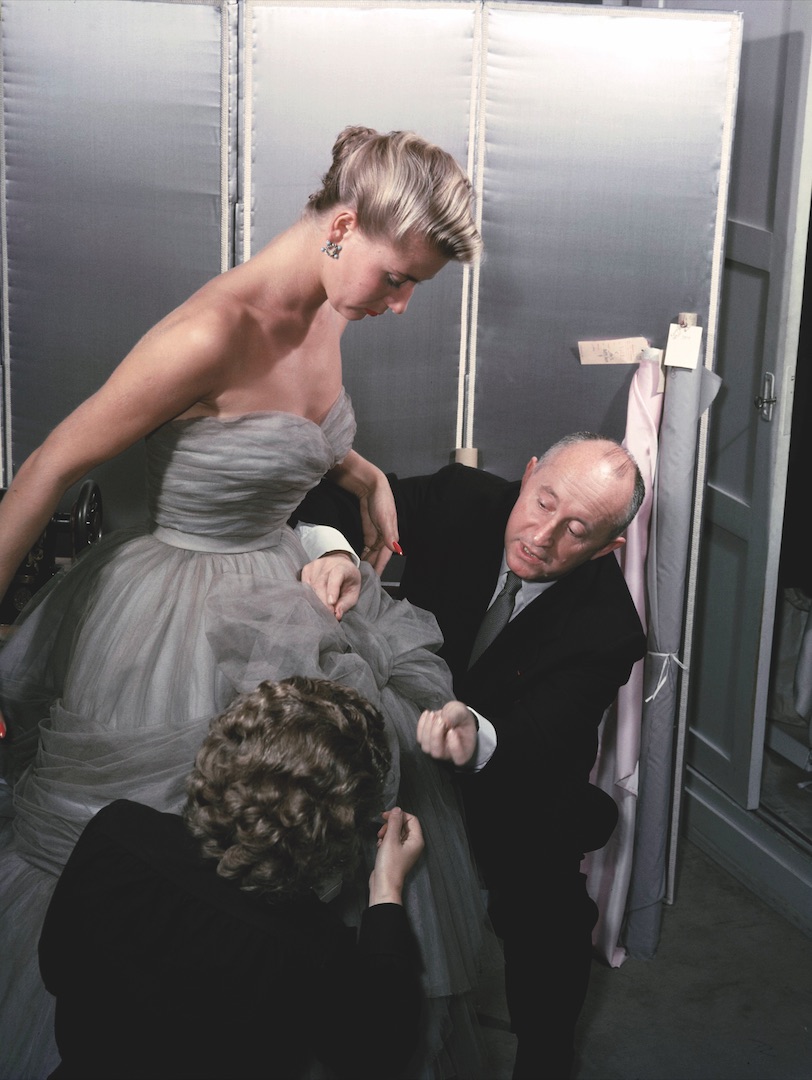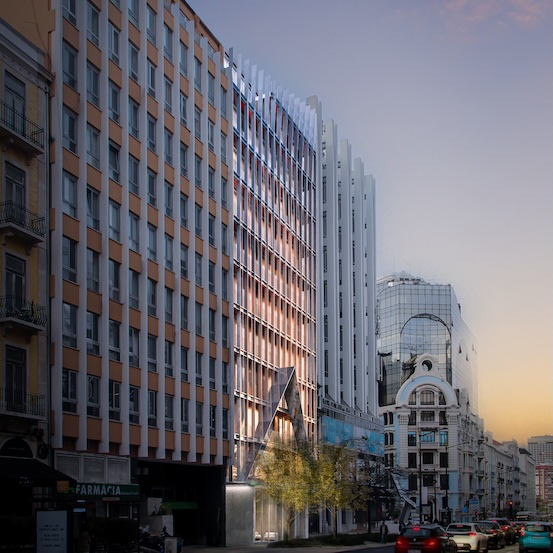They are like birds of paradise amidst the urban jungle. Haute Couture collections, that twice a year destroy the idea that the world is a cynical place, are what is left from a chimera called fashion. Even when everything else collapses, they remain the living proof that creativity and excellence are not dictated by the rush of the 21st century.
They are like birds of paradise amidst the urban jungle. Haute Couture collections, that twice a year destroy the idea that the world is a cynical place, are what is left from a chimera called fashion. Even when everything else collapses, they remain the living proof that creativity and excellence are not dictated by the rush of the 21st century.

© Getty Images
© Getty Images
“Haute Couture is the foundation of this house, so it is my creative and visionary duty to bring couture back. To me, Haute Couture is an unexpected means of creative liberty and a platform for innovation. Not only does it open another specter of possibilities, as it brings the modern vision of Balenciaga back to its origins.” The words of Demna Gvasalia, usually more associated to streetwear looks, evoke a long-announced desire: the return of the maison founded by Cristóbal Balenciaga to fashion’s grand arena. Balenciaga does not present an Haute Couture collection since its founder closed the workshop doors, in 1968, precisely when the revolution of customs began to favor the speed of prêt-à-porter. During this renaissance, which coincides with an increasingly greater demand for handmade clothes, custom-made and without an expiration date, the brand will have an artisan team solely devoted to High Fashion, based on the historic number 10 of Avenue George V. “This project was possible thanks to the success of Demna Gvasalia’s creative vision, as well as the exceptional Balenciaga figures over the last few years”, said Cedric Charbit, president and CEO of the house founded in 1919 at San Sebástian, Spain, quoted by Vogue Runway. “We already have orders for couture[pieces], so we know there is one costumer”, he added. And, far for avoiding the million-dollar question (what makes someone invest six figures on a dress?), he explained how this return is in line with current times, and how it points fashion, and the world, towards sustainability. “What I think it is great about today’s Haute Couture is its sustainable approach. We do not make things that are not kept forever. It is also sustainable in the way we relate with each other. I feel that most of today’s luxury brands have become mere brands and are no longer houses. I like the maison concept. When you are a maison, you are a family.” As Nicole Phelps, the journalist who wrote the Vogue Runway article, “Balenciaga’s advertisement arrives at a crucial time for Haute Couture.” A few days before, Jean-Paul Gaultier had announced that his next spring/summer show would be his last. And if, in normal circumstances, that “could have raised concerns about where extravagantly expensive dresses and skirts fit on a fast fashion world”, we now seem to be before a couture renaissance moment: Balmain presented its first High Fashion collection in 16 years, in 2019, and Celine, guided by Hedi Slimane, has also guaranteed its return to the official calendar.
Couture is dead. Long live couture. The idea that Haute Couture is declining could not be further from the truth. Karl Lagerfeld explained it after the spring/summer Chanel Haute Couture show in 2018: “When people say Haute Couture is dead… it may be for them, but not for us.” The kaiser could be a suspect interlocutor, but the truth is that it is not just centenary maisons that insist on betting in this category. Names such as Richard Quinn, Mary Katrantzou, and Marine Serre have recurrently explored the idea of demi couture. It was the President of Fédération de la Haute Couture and the Chambre Syndicale de la Haute Couture, Ralph Toledano, who explained the momentum: “Haute Couture is a growing market. Fashion brands keep increasing their sales in this area, and the clientele is expanding and diversifying.” It always was, and it still is, a land of free speech for designers, a land where creativity meets tradition and innovation. According to Toledano, new technologies help to “expand frontiers and possibilities regarding materials, techniques and approaches” (the work of the Dutch Iris van Harpen is enough to support this statement), and to awake the interest of new audiences, such as millennials. “While there are people looking for exception, there will be Haute Couture”, said Toledano. That is also because what used to be a closed group became, over the years, a sort of VIP lounge. In 1997, the Fédération decided to create the status of “invited member,” which allowed to broaden the range of brands that show their collections during the exclusive Couture Week – like Guo Pei and Vetements, in 2016. However, these cannot use the title “haute couture”, being limited to the most prosaic (but equally ethereal) “couture”. This is where we separate the wheat from the chaff, the trivial from the fabulous. In order to be considered couture, a piece must be hand- and-custom-made, in a workshop with at least 20 employees, by a brand/designer that shows its collections (daytimeand eveningwear) twice a year in Paris. That exerts a huge pression on keeping the title: Versace retired from the official calendar for eight years, came back in 2012, and is currently betting on “personalized presentations”; Christian Lacroix abandoned it in 2009. We just need to remember that the term “haute couture” itself is protected, annually reviewed by the French Ministry of Industry, and it is restricted to 16 brands (15, considering Jean-Paul Gaultier had his last presentation in January), including Chanel, Christian Dior, and Schiapparelli, to understand the scale of this parallel microcosmos.
Around 1947, there were some 47.000 Haute Couture customers worldwide. Today this figure is around two or three thousand, according to speculations. It is an expensive business, and it is expensively paid. In 2014, the English newspaper The Guardian wrote: “Prices are so extravagant as the dresses. A ball gowncan easily cost the same as a Rolls-Royce, a blouse can be as expensive as an apartment in Madrid. Which leads us to the question: assuming that few people can spend six figures on a dress, what is the point of Haute Couture?” In fact, what encourages someone to give away their credit card in exchange of a chiffon cloak with incrusted crystals that took 400 hours to make? A possible answer: a couture costumer (who lives is such different latitudes as Russia, China, or the Middle East) knows no limits. Some people order entire collections – around 30 dresses each season. That is what conveys strength to the comebackof houses such as Balenciaga. “We are a French house, we belong to Paris. We must do our job so that Paris Haute Couture, the craftmanship, the people, the houses… we must keep that alive.” Cedric Charbit used the same argument to justify the brand’s decision. And not even the arrogance accusations, who consider the haute couture business unnecessary in a world in constant ebullition, can destroy the myth that supports the creation of dresses with two-meter trains, intricately hand embroideries, the product of a craft that resembles Art. “Would we be the same without those incandescent coordinates, that we see from afar, in that parallel universe, of thousands of euros, where the last stitch is not moved by hurry but by touch? Probably yes. And yet we would be infinitely poorer because Haute Couture, just like Cinema, is an escape to what surrounds us”, stated Vogue Portugal three years ago.
According to records, the use of the term Haute Couture was initially applied to the work of the English Charles Frederick Worth, who presented the first fashion show in the mid-19th century, in Paris. However, the haute couture traces are lost in History, particularly in the richly elaborate clothes of the royals. That would be the case of Rose Bertin, the dressmaker of Queen Marie Antoinette, who brought the idea of “trend” to the French capital in the 18th century. And the city, that was already a boiling cultural center, turned into a refence for curious people all over the world, who copied the wonderful looks shown on their storefronts. Fast-forwardto the civilizational fall spurred by the industrial revolution and the ideal conditions were created for the appearance of genius such as Jean Patou, Paul Poiret, Madeleine Vionnet or Jeanne Lanvin. And if, these days, Haute Couture seems closer to the common mortal – if only because there is an immediate access to the shows’ images – it is still a synonym of desire, magnificence, and savoir faire, both in the looks imagined by Viktor& Rolf in 2017, with his collection Boulevard of Broken Dreams, whose dresses were made in “recycled” materials (and immediately sold onlineto anyone willing to spend 20.000 euros), as in the rock and roll couture of Alexandre Vauthier, who makes us sigh before the slight shameless of his ball gowns. And, in its multiple incarnations, the feminist strictness of Virginie Viard, the successor of Karl Lagerfeld at Chanel, to the meters and meters of colorful tulle of Giambattista Valli and the refined theatricality of Clare Waight Keller, at Givenchy, keeps the door open to impossible, where softness mixes with romance, show, and magic. “Forget reality. High Fashion is pure fantasy”, we wrote in 2017. “We need Haute Couture because we need the dream.”
This article was originally published in Vogue Portugal's Art issue, from March 2020. Para ler este artigo em português, veja a edição de Arte da Vogue Portugal.
Most popular


Relacionados






